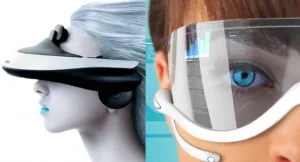As 2016 winds down, we enter the season of prophecy for next year’s digital future, and Virtual Reality (VR) content is being predicted as perhaps hitting a tipping point with “Mass Expansion of VR content creation” making the number three top trend for 2017 according to Juniper Research’s most recently published forecast. Never mind that the VR consumer hardware device market never really materialized in 2016 as earlier projected – VR is the next market platform meant to take us beyond the mobile space, with corporate investment so huge it has become a force majeure that is simply “too big to fail”.

Juniper insists there is a broad enough user base (see below) and “range of VR hardware sets on the market, …for a profitable software ecosystem,” according to its recent prognostication. The rationale for its prediction of Mass Expansion of VR content creation is a ripe environment for these markets in 2017 with key markets that include:
- AAA games publishers – Activision, Ubisoft
- Media companies – partnerships with VR players (Fox with Oculus, Time Warner & New York Times with Google Daydream) will see fruit, bringing new premium content.
- Tourism – VR can be offered to augment visitors’ experiences.
Juniper also said contributing to its prediction was, “…a wider range of VR hardware demands a wider range of content, and “content creators can now use existing frameworks to develop entirely new forms of content.” This plus the “announced VR content partnerships” not to mention the rather large companies that currently have a stake in the AR VR game. This, “…requires an ongoing commitment to creating content,” Juniper said.
A case in point; the massive hardware investments by top tier hardware makers (Apple and Samsung), software (Microsoft and Android) and social media players (Facebook). VR technology is seen by some as the fourth major “platform shift (after PC, web and mobile),” and considered a force majeure technology that is literally too big to fail.
But some see a more prolonged in VR adoption ramp like Digi-capital.com research that said back in April they reckoned a one year delay in the technology adoption. The delay comes on the heels of the stumbling launch of Augmented Reality (AR), a technology locked at the hip with VR, now living down the failed market entry of ill fated Google Glass, (nick named by some analysts as “Google Crass.”)
VR and AR two technologies set to reach $120B revenue by 2020And it’s AR not VR that will dominate the technology pair, according to the marketing group, with AR and VR Revenue share forecast by the end of the decade to hit $90B and $30B respectively, according to Digi-capital.com. “…it looked like consumer AR could launch in 2016. AR now appears largely focused on enterprise users this year, with most consumer AR expected to launch around 2017 (although wild cards like Magic Leap could change that). This effectively pushes AR consumer market revenue back by 12 months, with AR now forecast to hit $90 billion by 2020, the Digi-capital.com April 2016 blog continued. Meanwhile, “…VR largely remains an entertainment market driven by hardware, games, video and theme parks, with non-entertainment apps driving a meaningful minority of revenue by 2020 as the market develops,” according to the Digi-capital.com AR VR January 2016 Blog.
These numbers are also in line with International Data Corp.. The company published its IDC worldwide semiannual augmented and virtual reality spending guide in June 2016 that stated, “…worldwide revenues for the augmented reality and virtual reality (AR/VR) market will grow from $5.2 billion in 2016 to more than $162 billion in 2020. This represents a compound annual growth rate (CAGR) of 181.3% over the 2015-2020 forecast period,” according to the marketing group.
Bandwidth Driving the market
According to Juniper, bandwidth is driving the content revolution (even though products have yet to hit full consumer adoption.)
Digi-Capital reckons AR/VR data could be a major driver to help the major wireless carriers [“mobile networks”] out of period of flat annual revenue growth rate that’s currently less than 2%. “So it’s a big deal,” a recent report from Digi-capital.com research. The group said, “YouTube estimates that each frame of 360 video requires 4-5 times the bandwidth of traditional video. High resolution, high frame rate, stereo images and data could drive some applications even higher in terms of bandwidth requirements, and someone has to pay for all that data.”
So will the 2017 market materialize for VR content as predicted by Juniper? Perhaps more importantly, is VR the next big thing? Of course time will tell, and perhaps our visit to CES in a couple of weeks may help make things a bit more clear. In the meantime check out the full Juniper Research 2017 prediction article that covers nine other predictions for 2017. – Steven Sechrist

